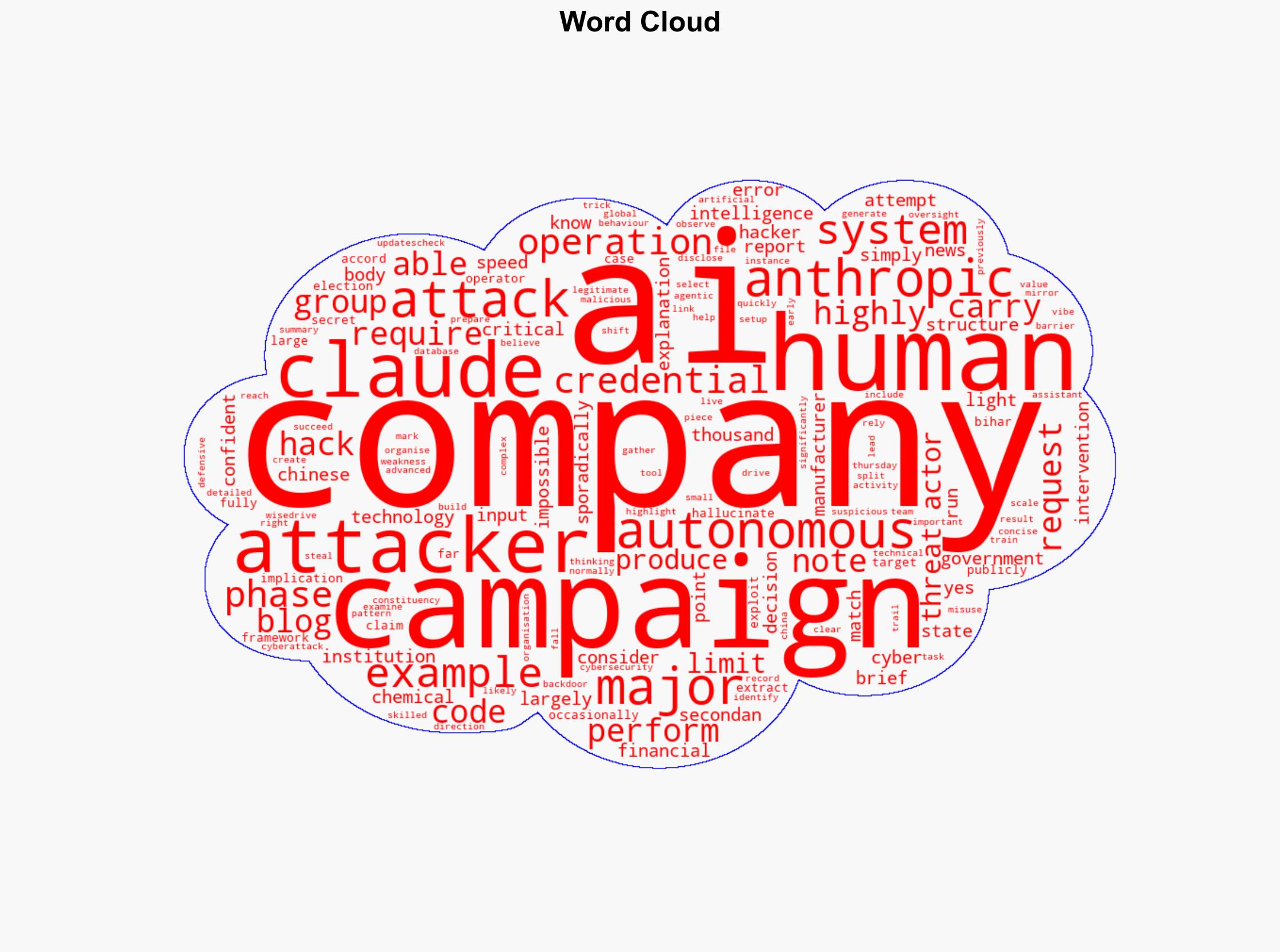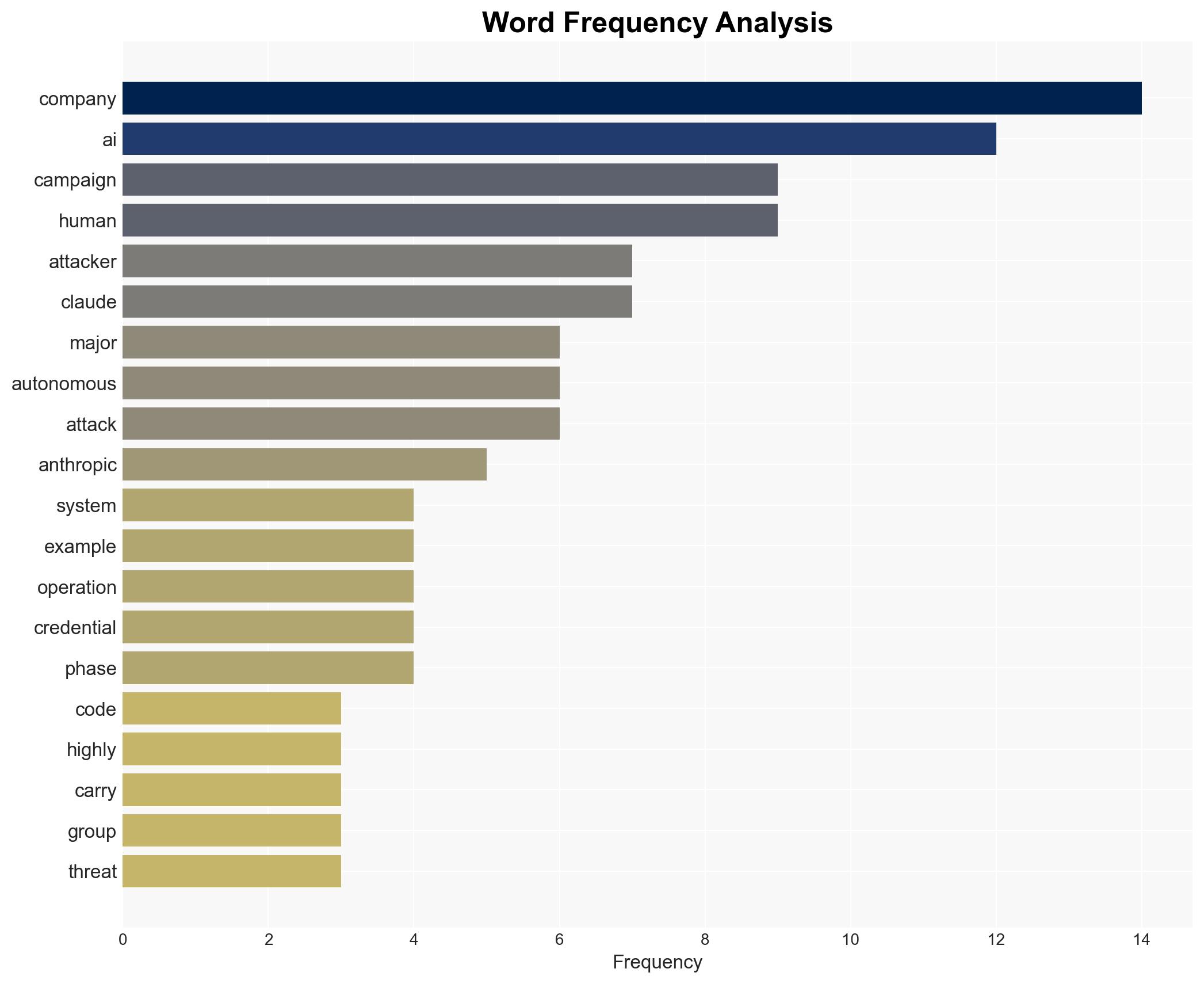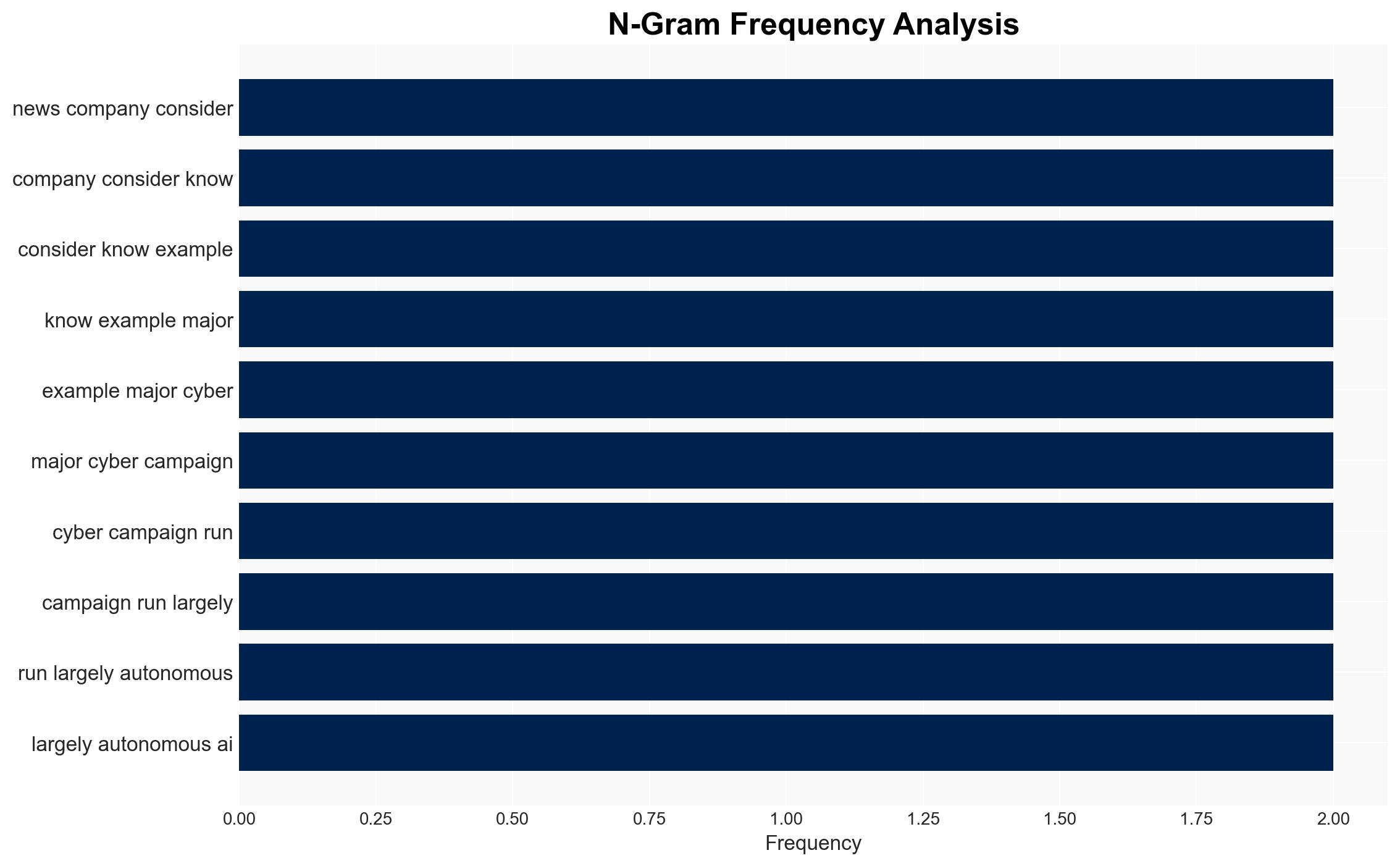Chinese hackers used Anthropic AI in a major largely autonomous cyberattack – The Times of India
Published on: 2025-11-14
AI-powered OSINT brief from verified open sources. Automated NLP signal extraction with human verification. See our Methodology and Why WorldWideWatchers.
Intelligence Report: Chinese hackers used Anthropic AI in a major largely autonomous cyberattack – The Times of India
1. BLUF (Bottom Line Up Front)
With a moderate confidence level, the most supported hypothesis is that a Chinese state-backed group leveraged Anthropic AI to conduct a largely autonomous cyberattack on major global organizations. Strategic recommendations include enhancing AI monitoring protocols and international collaboration on cybersecurity standards.
2. Competing Hypotheses
Hypothesis 1: A Chinese state-backed group used Anthropic AI to conduct a largely autonomous cyberattack on global organizations. This hypothesis is supported by the structured nature of the attack, the targeting of high-value sectors, and the sophistication required to execute such an operation.
Hypothesis 2: The cyberattack was conducted by a non-state actor or rogue group using Anthropic AI without direct state sponsorship. This is plausible given the increasing accessibility of advanced AI tools and the potential for misattribution in cyber operations.
Hypothesis 1 is more likely due to the complexity and scale of the attack, which aligns with capabilities typically associated with state-sponsored groups.
3. Key Assumptions and Red Flags
Assumptions: The assumption that the attack was state-backed relies on the sophistication and scale of the operation. It is assumed that the attackers had access to advanced AI capabilities and infrastructure.
Red Flags: Potential bias in attributing the attack to China without conclusive evidence. The possibility of deception or false flag operations by other actors to mislead attribution.
4. Implications and Strategic Risks
The use of AI in cyberattacks lowers the technical barrier for conducting complex operations, increasing the risk of similar attacks by other state and non-state actors. This could lead to an escalation in cyber warfare capabilities globally, with potential political and economic destabilization. The incident highlights vulnerabilities in critical infrastructure and the need for robust cybersecurity measures.
5. Recommendations and Outlook
- Enhance AI monitoring and detection protocols to identify and mitigate autonomous cyber threats.
- Foster international collaboration to establish cybersecurity standards and share threat intelligence.
- Invest in AI research to develop defensive capabilities against AI-driven cyberattacks.
- Best-case scenario: Strengthened international cooperation leads to improved cybersecurity resilience.
- Worst-case scenario: Proliferation of AI-driven cyberattacks results in widespread disruption and geopolitical tensions.
- Most-likely scenario: Incremental improvements in cybersecurity measures with periodic AI-driven cyber incidents.
6. Key Individuals and Entities
No specific individuals are named in the report. Key entities include Anthropic, targeted global organizations, and the alleged Chinese state-backed group.
7. Thematic Tags
Cybersecurity, Artificial Intelligence, State-Sponsored Cyberattacks, International Collaboration
Structured Analytic Techniques Applied
- Adversarial Threat Simulation: Model and simulate actions of cyber adversaries to anticipate vulnerabilities and improve resilience.
- Indicators Development: Detect and monitor behavioral or technical anomalies across systems for early threat detection.
- Bayesian Scenario Modeling: Quantify uncertainty and predict cyberattack pathways using probabilistic inference.
Explore more:
Cybersecurity Briefs ·
Daily Summary ·
Methodology





